How Aldridge firm helped build the world's longest sea-crossing bridge
A specialist engineering company from Aldridge has played a key role in the building of the world's longest sea-crossing bridge, linking Hong Kong to the Chinese mainland, which opened this week.
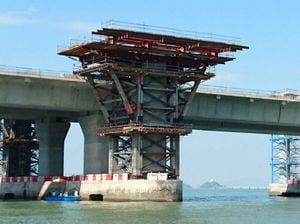
Chinese president Xi Jinping presided over a ceremony in the city of Zhuhai to open the 34 mile-long bridge linking it to the regions of Hong Kong and Macau.
Digital fireworks exploded on a screen behind him as leaders of the three cities looked on.
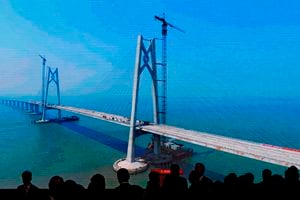
The £15 billion bridge took almost a decade to build and Aldridge-based RMD Kwikform played a vital role in making the ambitious project a reality.
The company, part of the giant Interserve construction and services group, one of the world’s go-to experts when it comes to the field of formwork and falsework – the temporary structures used for moulding concrete and supporting building work on construction sites around the globe.
It employs around 2,000 people around the world, working on projects from Australia and the Middle East to the USA, where it is involved in building the new Las Vegas Raiders football stadium in Paradise, Nevada.
But those projects rely on the technical know-how of the team of engineers at its head office in Brickyard Road, where it employs around 120 people.
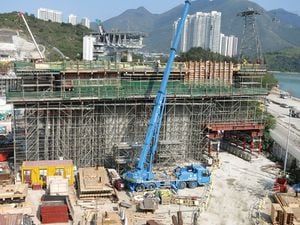
The Hong Kong bridge includes an undersea tunnel, allowing ships to pass through the Pearl River delta, and RMD has been involved in work on the three lane bridge since 2014, have previously helped with major work on the land phase of the project.
As work progressed, extra heavy-duty shoring support was needed to construct walls with the sea on the other side, and these were designed back at Aldridge to enable the construction of a traffic turnaround facility in the water, forming an elevated junction over the bridge's viaducts. As well as enabling ordinary traffic to turn around the facility will speed up the ability of ambulances to get casualties back to mainland hospitals in case of an accident.
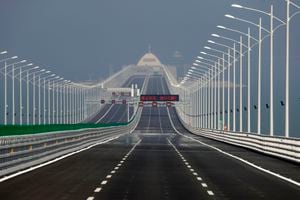
RMD Kwikform's deputy sales manager, Martin Chan, said: “The turnaround facility is located in the Western Waters of Hong Kong and spans over the top of the main dual three lane bridge. This meant the overall structure had to be built using both deck mounted and barge mounted cranes."
To cope with the weight of the precast concrete sections and the force of Hong Kong's regular typhoons, the RMD team came up with solutions based on the company's Megashor heavy-duty shoring system. "With a requirement to support the turnaround facility from the top of the cast in-situ pier, we designed two identical Megashor tower arrangements, each side of the main bridge, reaching a height of just over 19 metres (60ft)," said Martin.
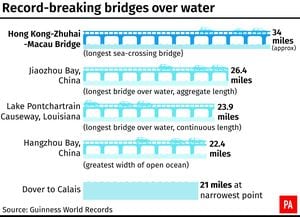
It proved a complex and challenging project, and at the same time as building the main tower support structure RMD designed safety platforms, exits and entries for the teams working on the project throughout the construction phase.
Martin added: “As well as the complex design, we were challenged on delivery, erection and dismantling time, especially as the tower system had to be erected on a barge. Although each tower was the same, we also needed to be able to build in flexibility to alter the heights of the towers so that we could meet the exacting requirements.”
The now completed bridge will cut travel time across the delta from several hours to just 30 minutes, something China hopes will bind the region together as a major driver of future economic growth.
Heavily regulated traffic using permits issued under a quota system will begin flowing on Wednesday.
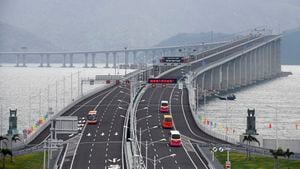
The bridge forms a physical link between the mainland and Hong Kong, an Asian financial hub that was handed over from British to Chinese control in 1997 with the assurance it would maintain its own legal and economic system for 50 years.
That carries major political significance for Mr Xi's administration, which has rejected calls for political liberalisation in Hong Kong, sparking fears Beijing will clamp down further on civil liberties before the end of the "one country, two systems" arrangement in 2047.
The bridge's opening also comes a month after the inauguration of a new high-speed rail link from Hong Kong to mainland China that runs along a different, shorter route.
That line has vastly decreased travel times but also raised concerns about Beijing's growing influence because mainland Chinese law applies within part of the line's Hong Kong terminus.
.





